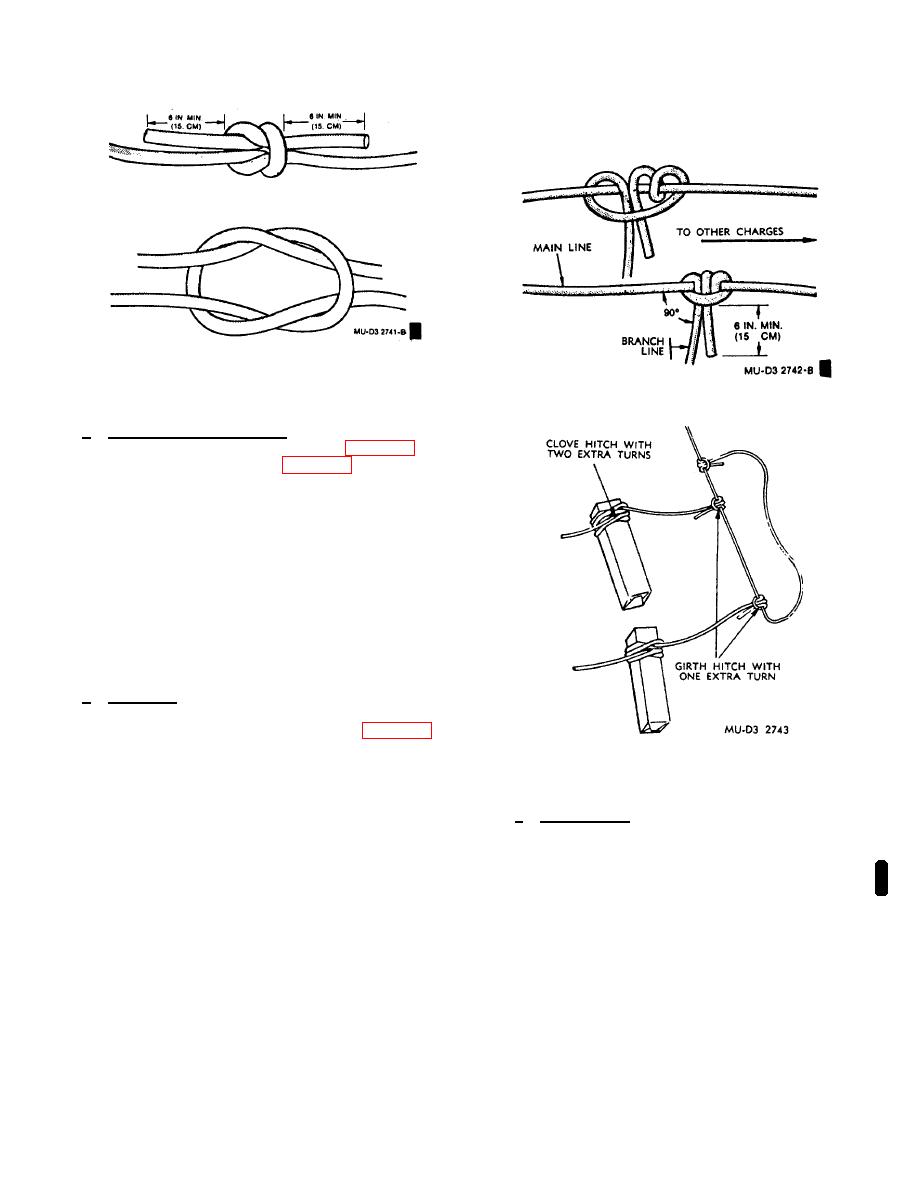 |
|||
|
|
|||
|
Page Title:
Figure 5-16. Square knot connections |
|
||
| ||||||||||
|
|
 TM 9-1300-277
cords; otherwise, the cords will cut each other and
destroy the firing system.
Figure 5-16. Square knot connections.
Figure 5-17. Girth hitch with one extra turn.
a. Branch Line Connections. A branch line is
fastened to a main line by means of a clip (fig. 5-15) or
a girth hitch with one extra turn (fig. 5-17). The branch
line is clipped with the U-shaped trough of the clip and
the main line with the tongue of the clip. The clip is bent
against the cord, holding the connection securely. The
angle formed by the branch line and the cap end of the
main line should not be less than 900 from the direction
from which the blast is coming; at a smaller angle, the
branch line may be blown off the main line without being
detonated. At least 15 centimeters (6 inches) of the
running end of the branch line is left free beyond the tie.
The running end of the girth hitch will be on the opposite
side of branch line from initiating point on the main.
b. Ring Main. A ring main is made by bringing the
main line back in the form of a loop and attaching it to
itself with a girth hitch with one extra turn (fig. 5-18).
This will detonate an almost unlimited number of
charges. The ring main makes the detonation of all
Figure 5-18. Ring main with branch lines.
charges more positive because the detonating wave
approaches the branch lines from both directions and
c. Initiating Cap. The detonating cord main line is
the charges will be detonated even when there is a
initiated by an electric blasting cap when an electric
break in the ring main. Branch line connections should
firing system is being used, or by a nonelectric blasting
be made perpendicular to the ring main. Any number of
cap when a nonelectric firing system is being used. The
branch lines may be connected to the ring main, but a
blasting cap is firmly attached at least
branch line is never connected at a point where the ring
main is spliced. In making detonating cord branch line
connections, avoid crossing lines. However, if this is
necessary, be sure to have at least 0.30 meters (one
foot) of clearance at all points between the detonating
Change 2
5-14
|
|
Privacy Statement - Press Release - Copyright Information. - Contact Us |